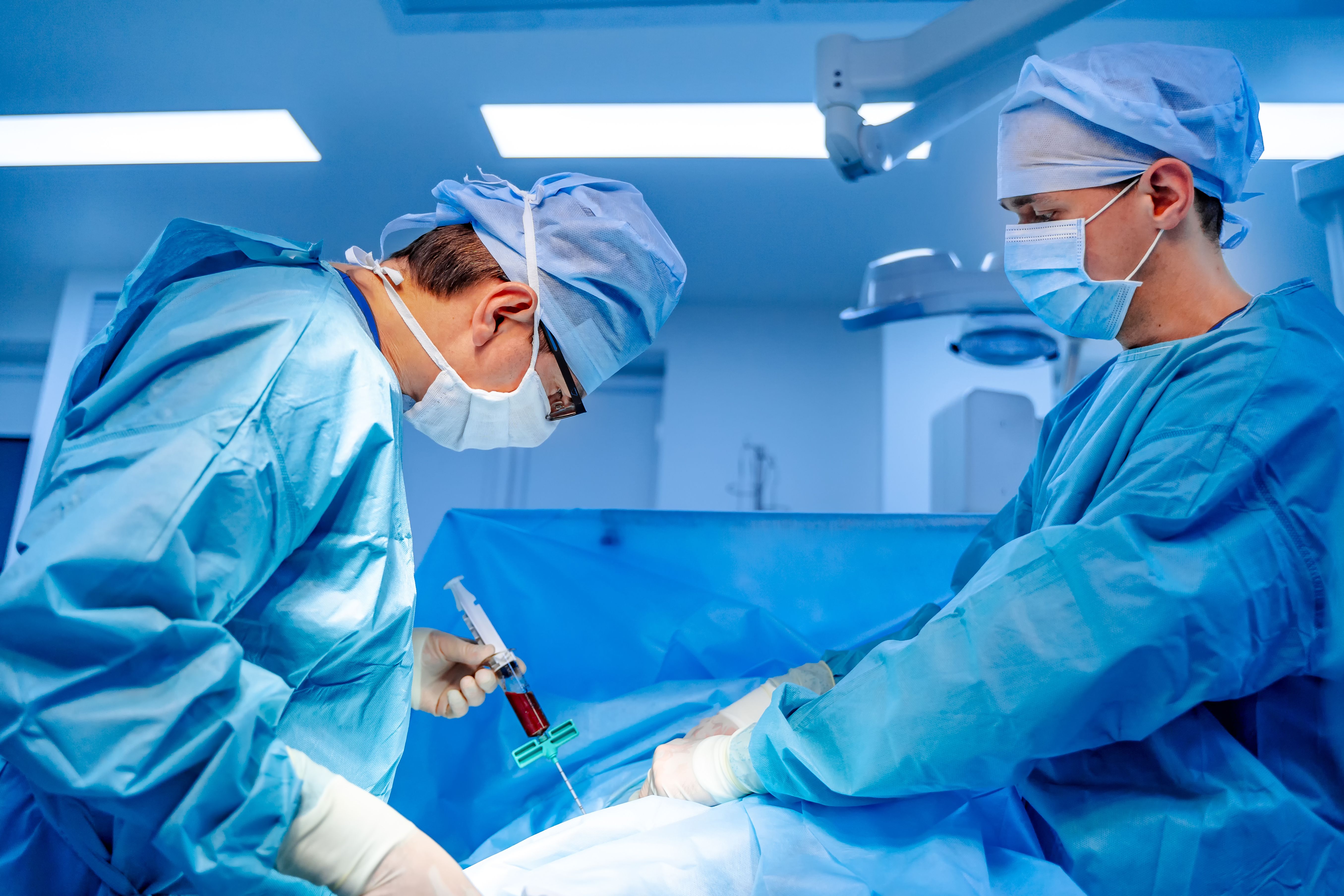News
Article
Hematopoietic Cell Transplantation ‘Potentially Curative’ for High-Risk Patients with MDS
Author(s):
Hematopoietic cell transplantation improved survival among high-risk genetic subgroups of patients with myelodysplastic syndrome, a recent study found.
Hematopoietic cell transplant is currently the only known cure for myelodysplastic syndrome.

Allogeneic hematopoietic cell transplantation (HCT) improved survival among high-risk genetic subgroups of patients with myelodysplastic syndrome (MDS), regardless of baseline clinical or genetic characteristics, according to a study published in the Journal of Clinical Oncology.
“Allogeneic HCT confers superior survival in transplant-eligible patients with high-risk MDS and an available donor. … Even after adjustment for genetic variables, survival after allogeneic HCT remained superior compared with non-HCT treatment with no interaction between genetic subtype and treatment effect,” the authors wrote.
“This pivotal prospective study demonstrates that allogeneic HCT represents an important, potentially curative, therapeutic strategy in patients with high-risk genetic sub-groups of MDS, including patients with TP53 mutated MDS,” Journal of Clinical Oncology associated editor Dr. Charles F. Craddock of Queen Elizabeth Hospital in Birmingham, England wrote in a contextual commentary published along with the study.
MDS refers to “conditions that can occur when the blood-forming cells in the bone marrow become abnormal. This leads to low numbers of one or more types of blood cells,” according to the American Cancer Society.
It is unknown how many people are affected by MDS in the United States each year.
“Some estimates have put this number at about 10,000, while other estimates have been much higher,” the American Cancer Society reported. “MDS is uncommon before age 50, and the risk increases as a person gets older. It is most commonly diagnosed in people in their 70s. The number of new cases diagnosed each year is likely increasing as the average age of the US population increases.”
HCT is a procedure where healthy blood-forming cells are administered to replace a patient’s cells destroyed by chemotherapy or radiation treatments. It was described as “the only curative therapy for myelodysplastic syndrome” in a 2016 study published in Hematology, ASH Education Program.
“For an allogeneic stem cell transplant, after the bone marrow is destroyed, the patient receives blood-forming stem cells from another person — the donor,” the American Cancer Society explained. “This is the type of transplant typically used for MDS.”
Stem cell transplant side effects can include low blood counts and graft-versus-host disease and can potentially be life-threatening, according to the American Cancer Society.
Learn more: Watch CURE’s video series on management of myelodysplastic syndromes
The latest study findings were reached via genetic analysis of the Blood and Marrow Transplant Clinical Trials Network 1102 multicenter study of comparing different therapy options among 309 patients with MDS ages 50 to 75 with International Prognostic Scoring System (IPSS) intermediate-2 or high-risk MDS. With 384 total participants, the initial study was sponsored by the Medical College of Wisconsin, launched in 2013 and posted its last update in March, according to its listing on clinicaltrials.gov.
Among the 309 participants in the recent study there was a similar distribution of genetic mutations between the 229 patients who received HCT (the donor arm) and the 80 who did not (the non-donor arm): TP53 (28% vs. 29%), ASXL1 (23% vs. 29%) and SRSF2 (16% vs. 16%) were the most common genetic mutations. Most participating patients (88%) were identified as having at least one genetic mutation.
Overall survival (OS; the time a patient lives following treatment) at three years was 21% for patients with a TP53 mutation, less than half of the 52% of patients without a TP53 mutation and was similar among different genetic subcategories of patients with a TP53 mutation.
With HCT factored in as a time-dependent co-variate, 23% of patients with a TP53 mutation who received HCT experienced OS at three years, compared to 11% of patients with a TP53 mutation who did not receive HCT. Likewise, OS at three years was 68% among patients with very high risk IPSS (IPSS-M) without a TP53 mutation in the donor arm was 68%, but 0% for patients in the non-donor arm.
“The benefit of HCT over non-HCT treatment was independent of TP53 allelic state and not restricted to specific subgroups of TP53 mutated MDS, including VAF, complex karyotype, or mutation clearance after pre-HCT hypomethylating agent treatment,” the authors wrote.
“Together, these data indicate that no patient with TP53-mutated MDS should be excluded from consideration for HCT a priori on the basis of TP53 status alone. Despite the relative benefit of HCT over non-HCT treatment, however, the absolute survival benefit remains modest, meriting value-based discussions between physicians and patients on the appropriateness of transplantation. …Our data indicate that the benefit of HCT in patients with IPSS intermediate-2 and high-risk MDS extends to high-risk genetic subgroups.
“Moreover, patients with TP53-mutated MDS, irrespective of additional clinical or genetic variables, including allelic state, VAF and pre-HCT mutation clearance, have superior survival with RIC allogeneic HCT compared with non-HCT treatment approaches, indicating that these patients should not be excluded for HCT on the basis of genetic findings alone, further reinforcing the conclusion that such patients should be offered transplantation when a donor is available. Patients with IPSS-M very high-risk MDS without a TP53 mutation had favorable outcomes when a donor was available, suggesting that such patients see particular benefit from early transplantation.”
For more news on cancer updates, research and education, don’t forget to subscribe to CURE®’s newsletters here.




